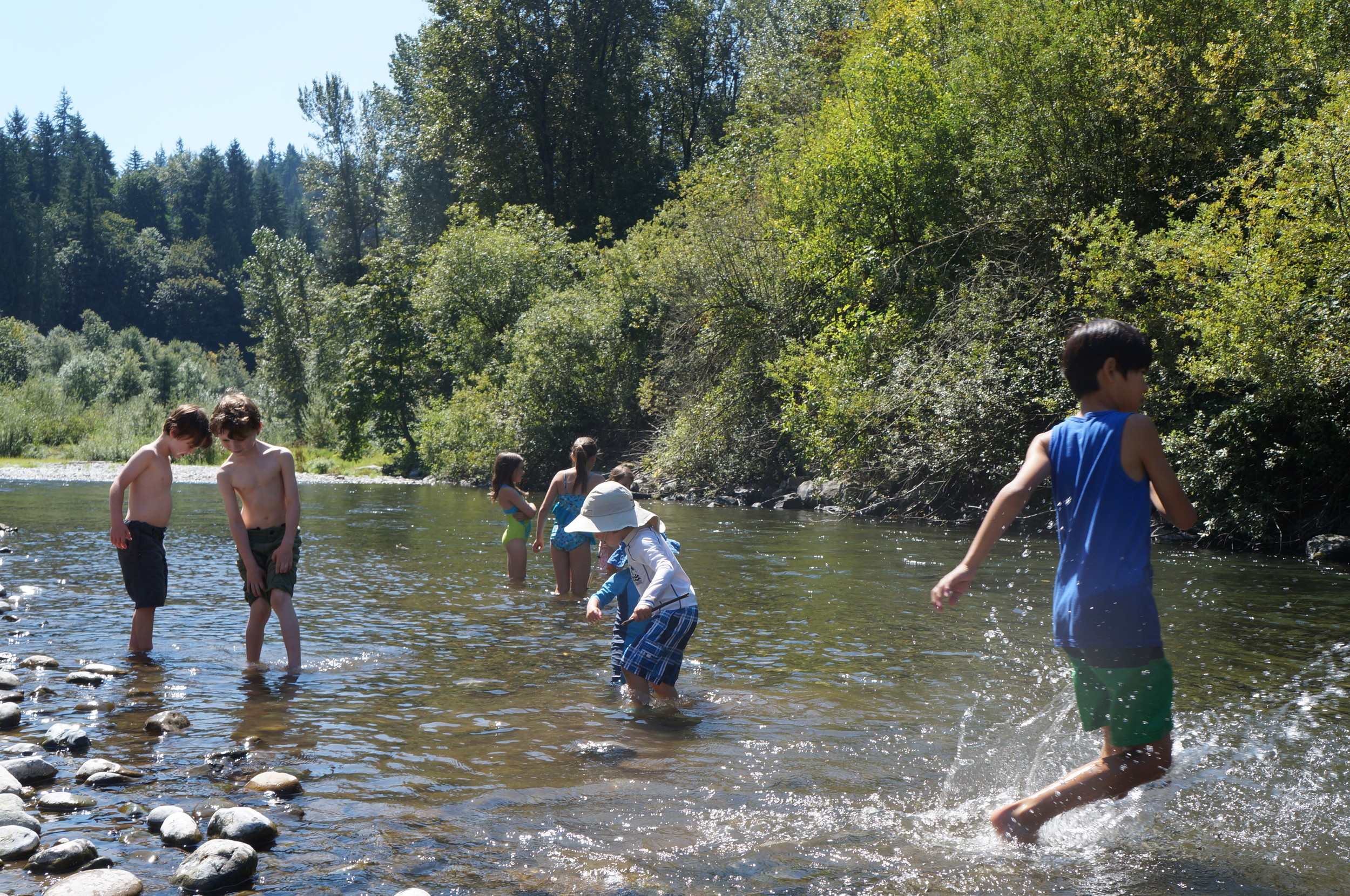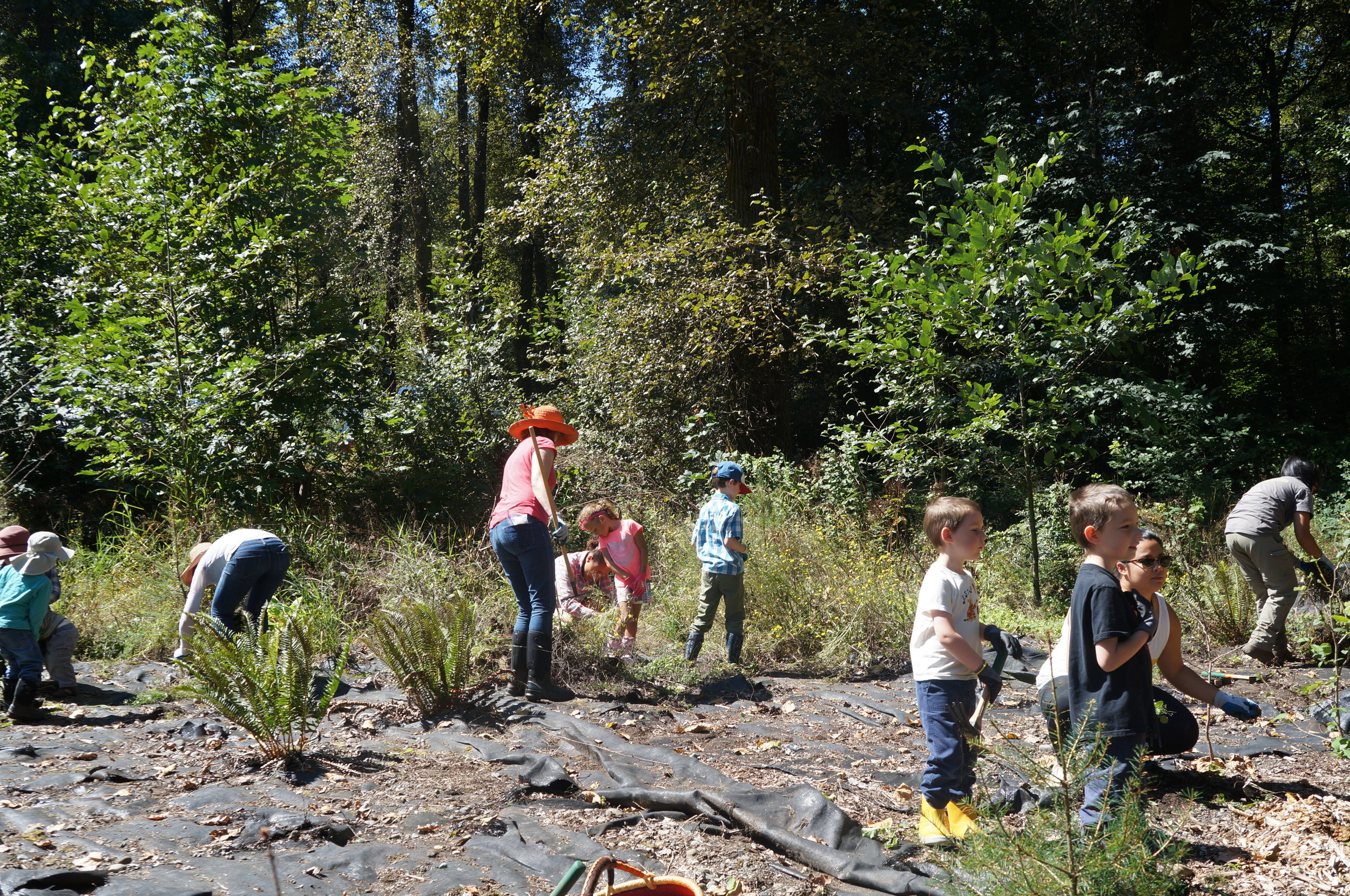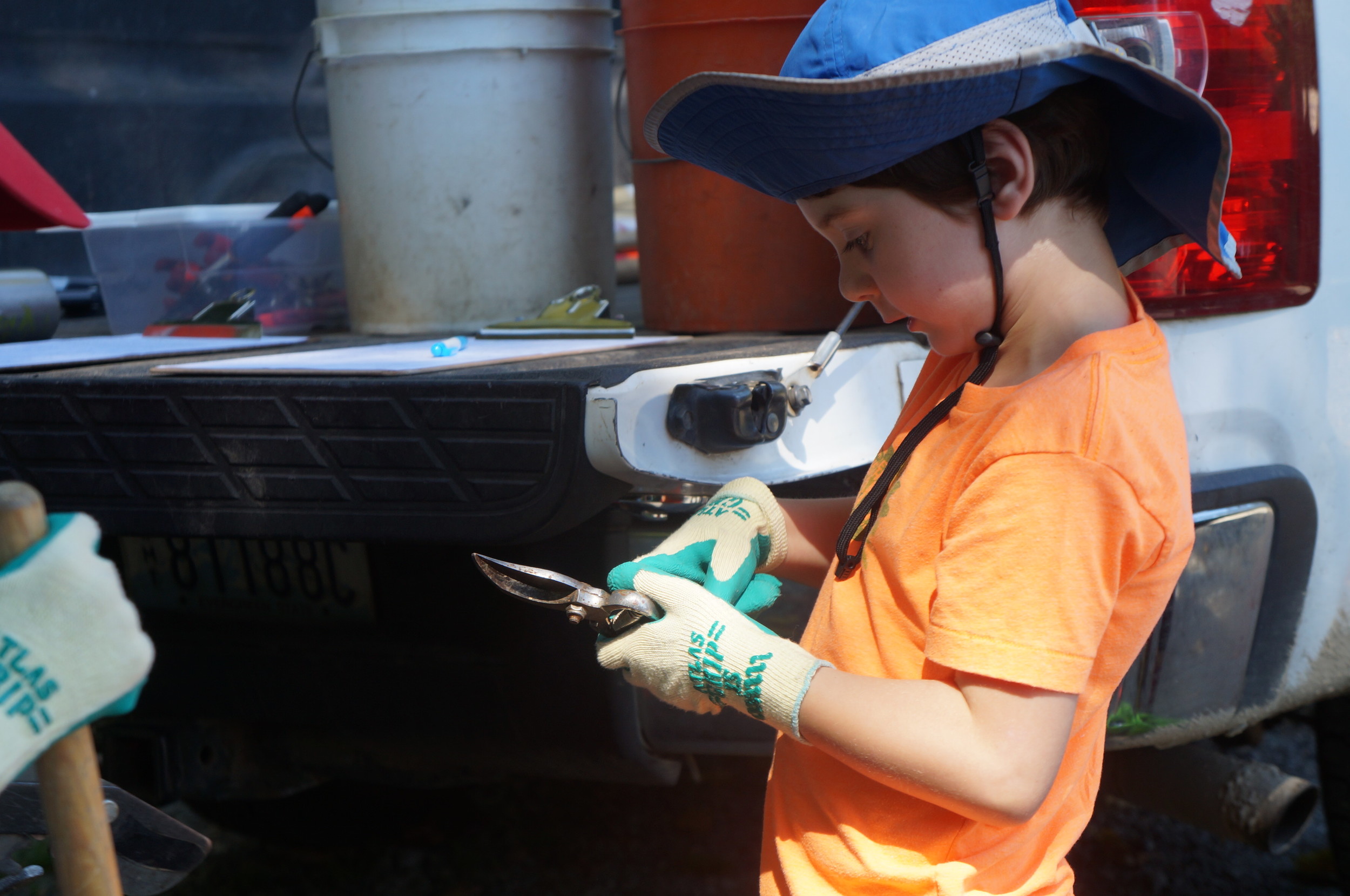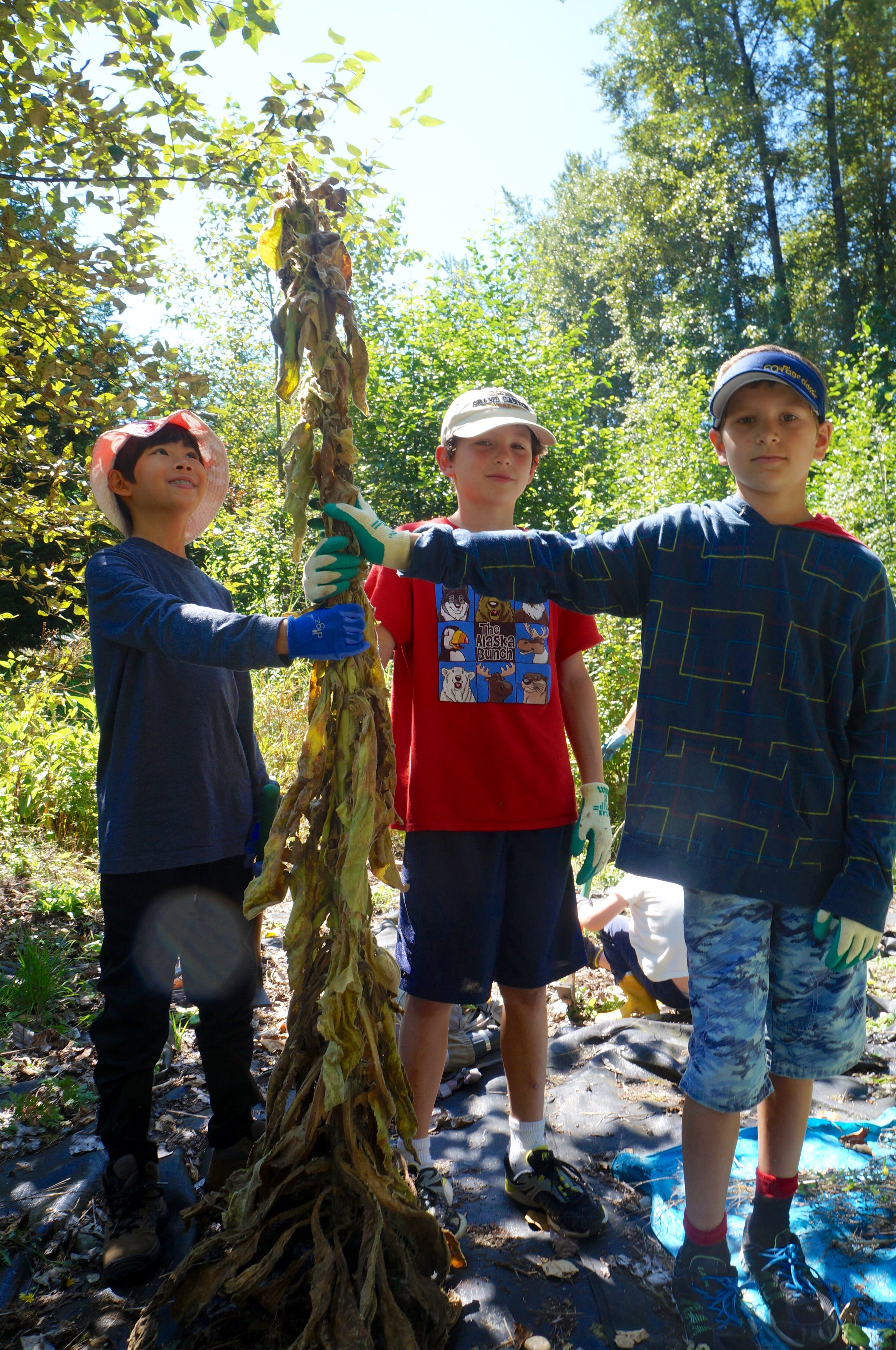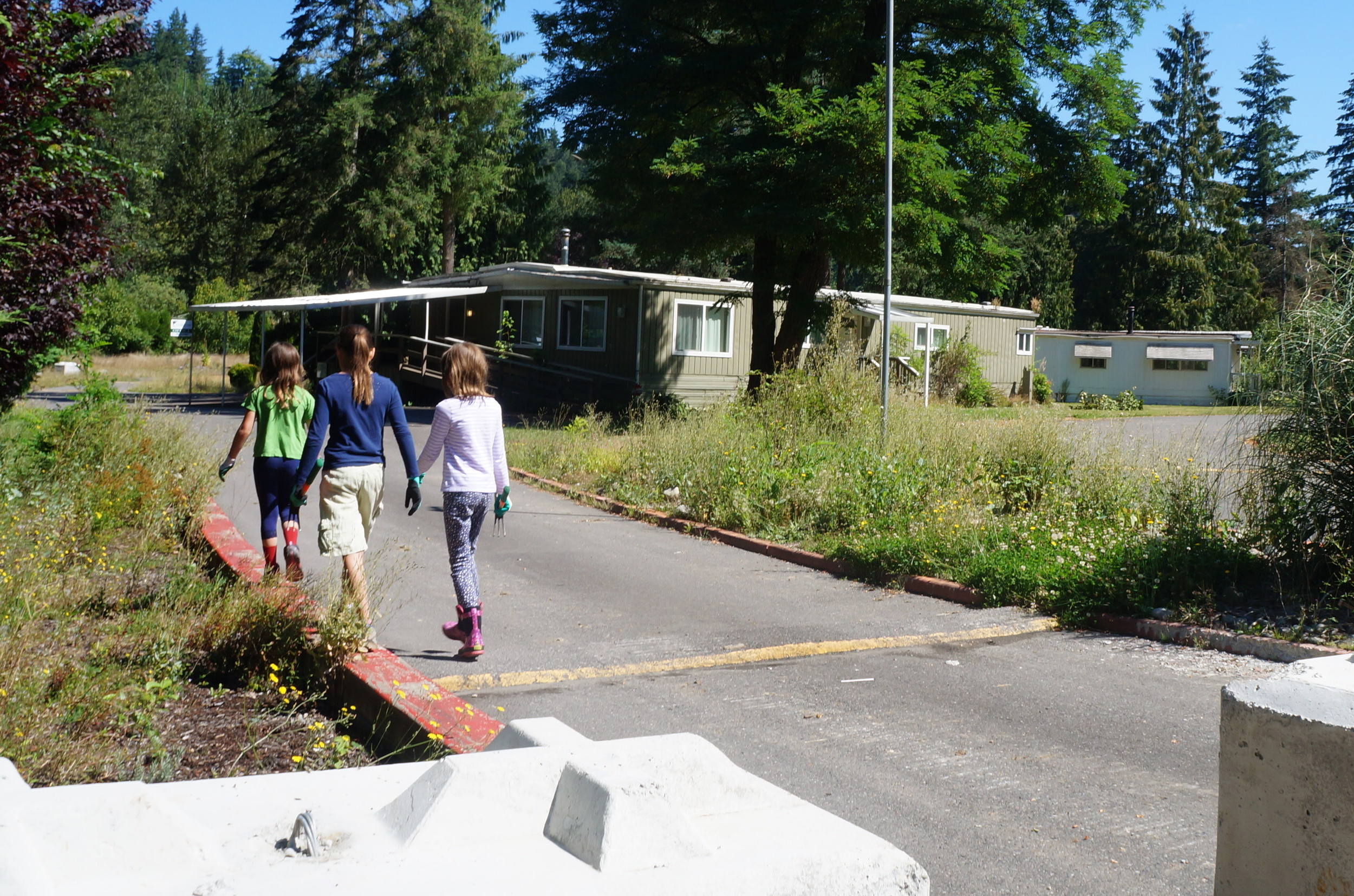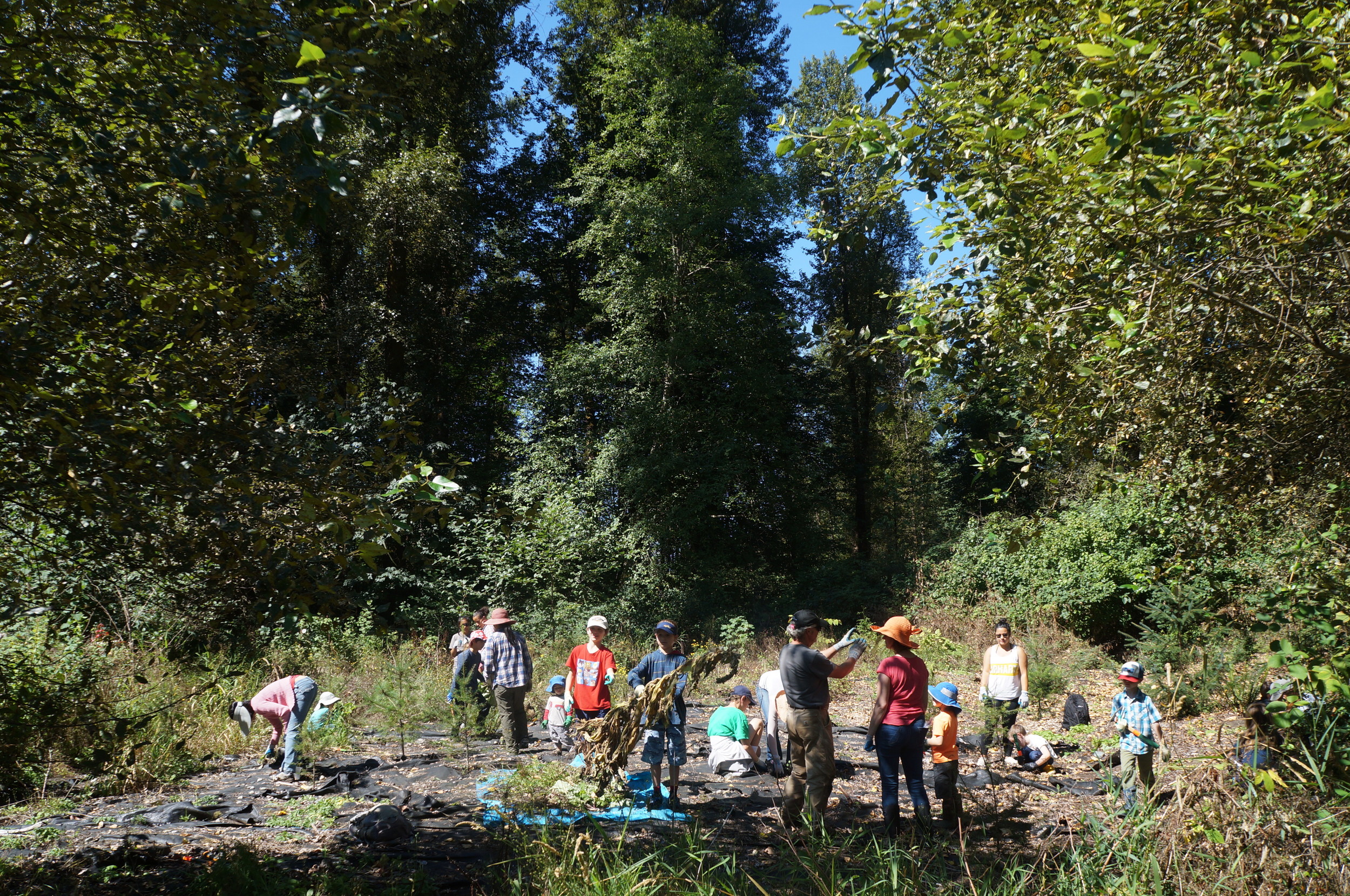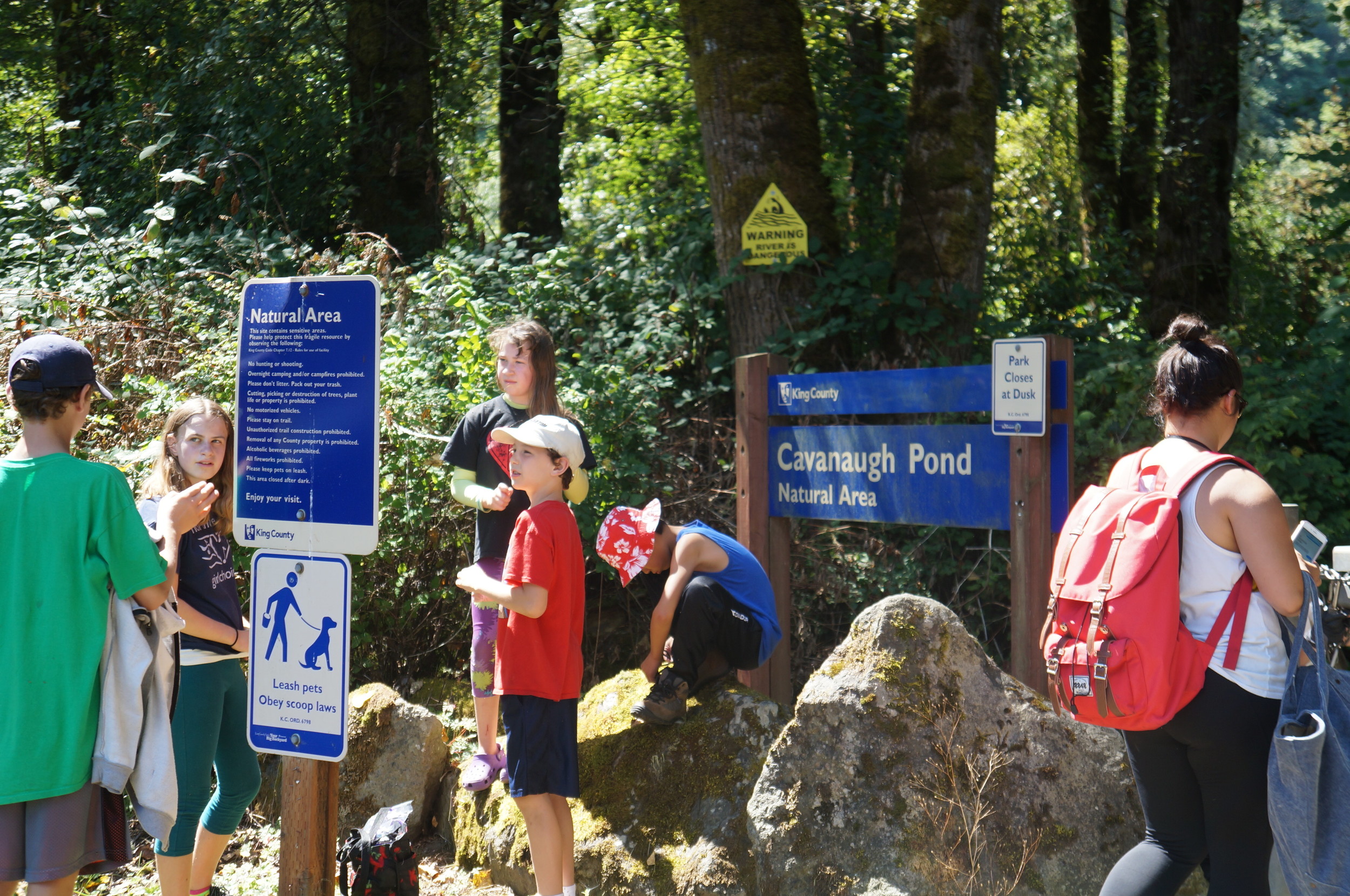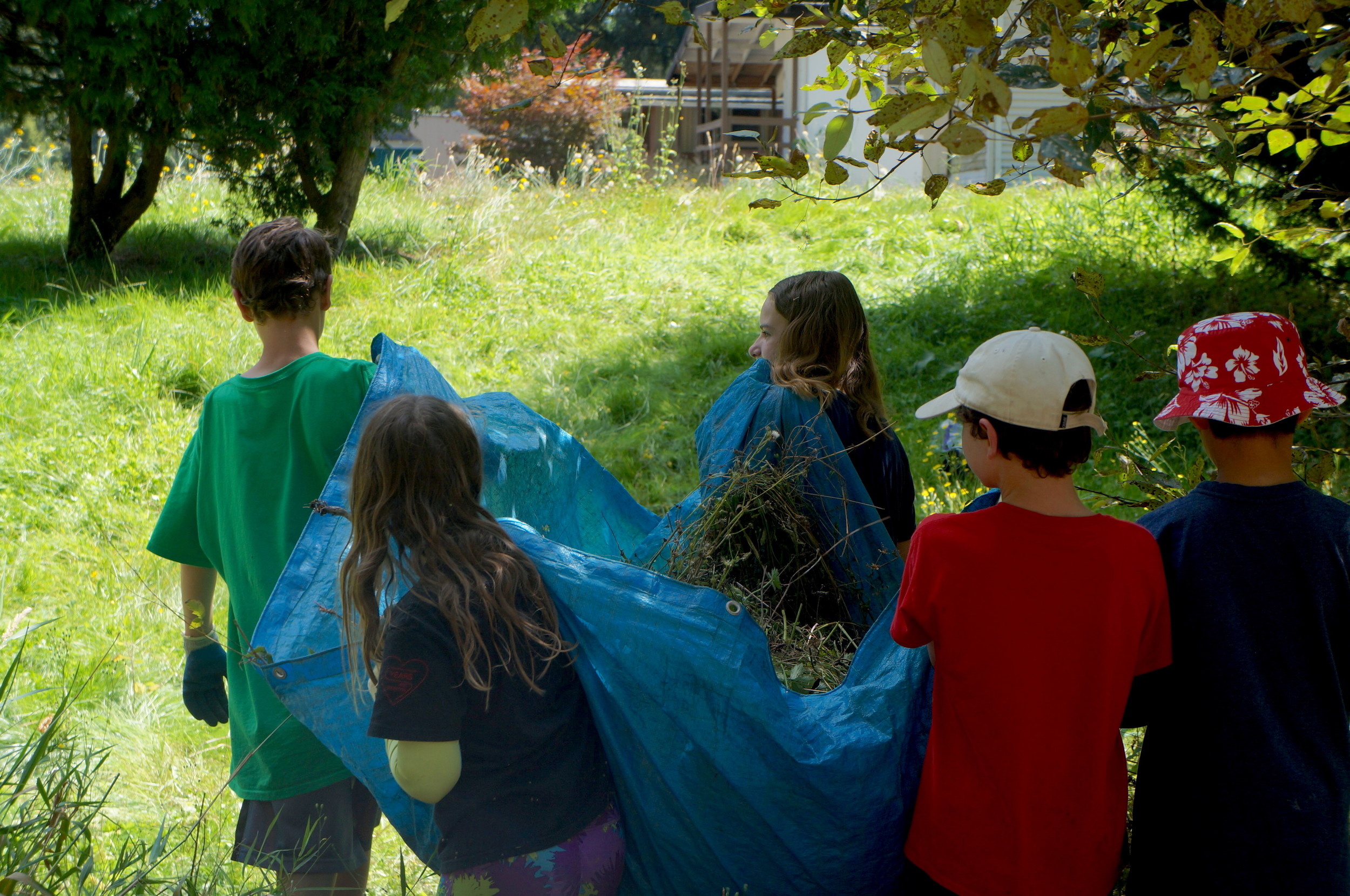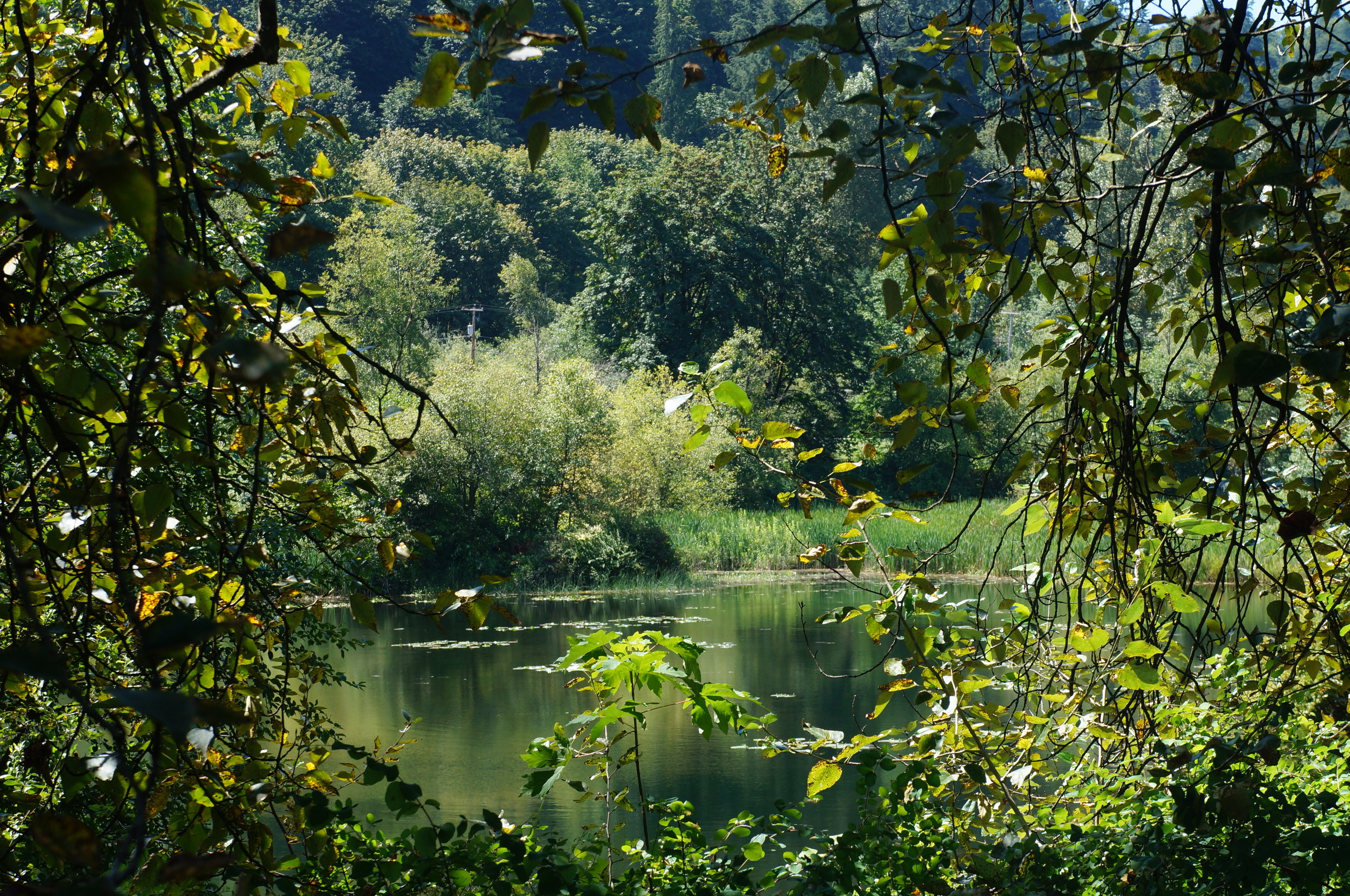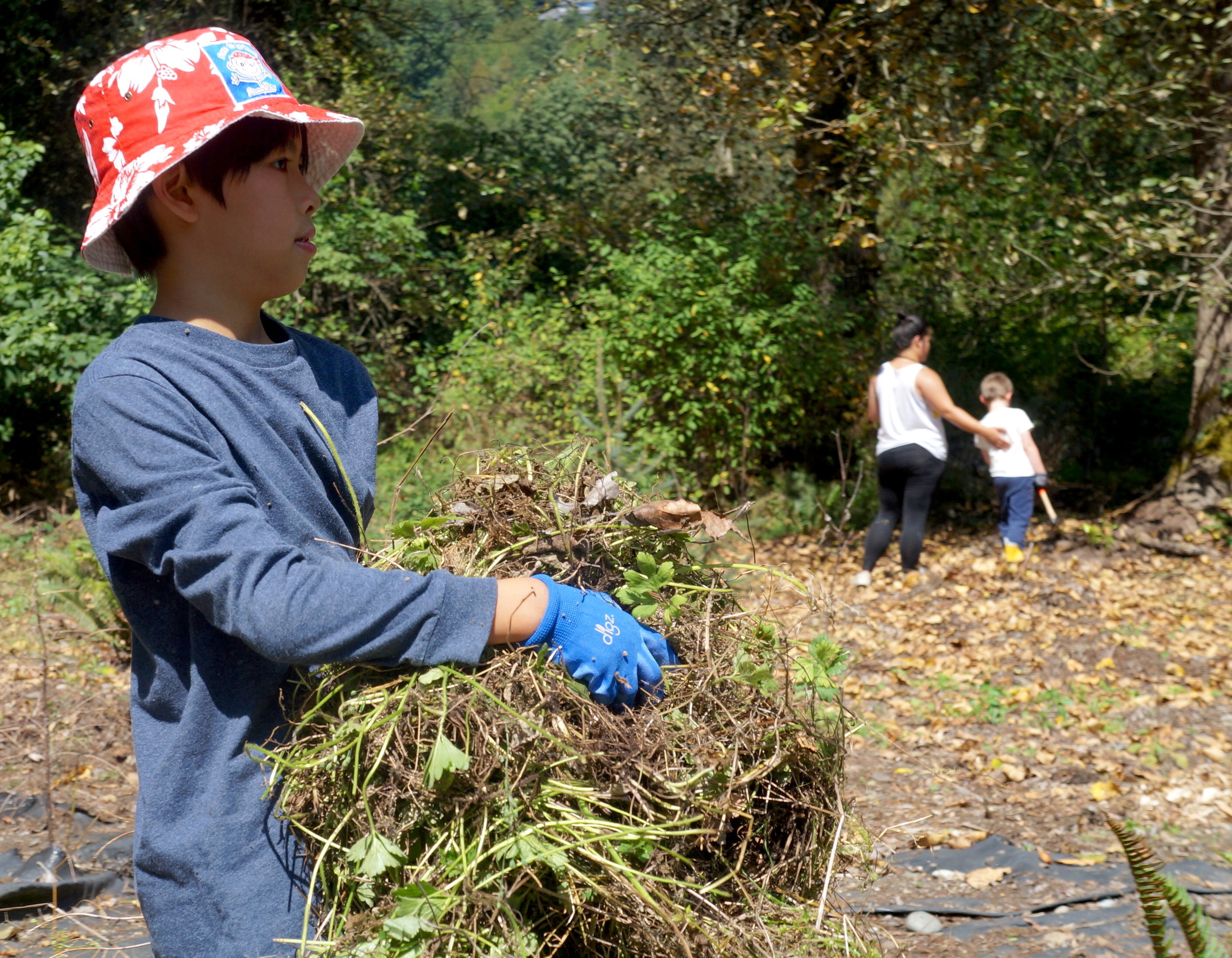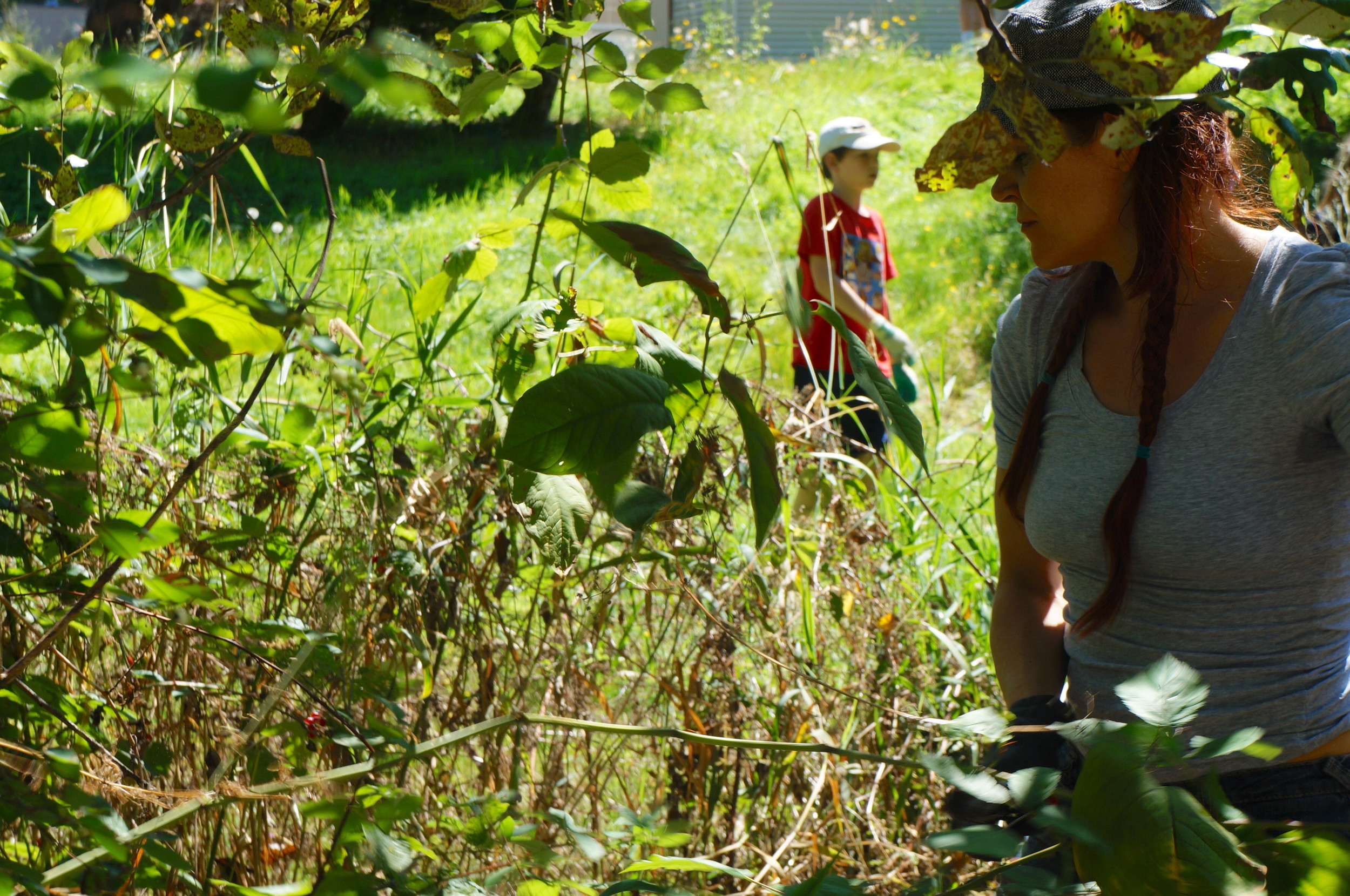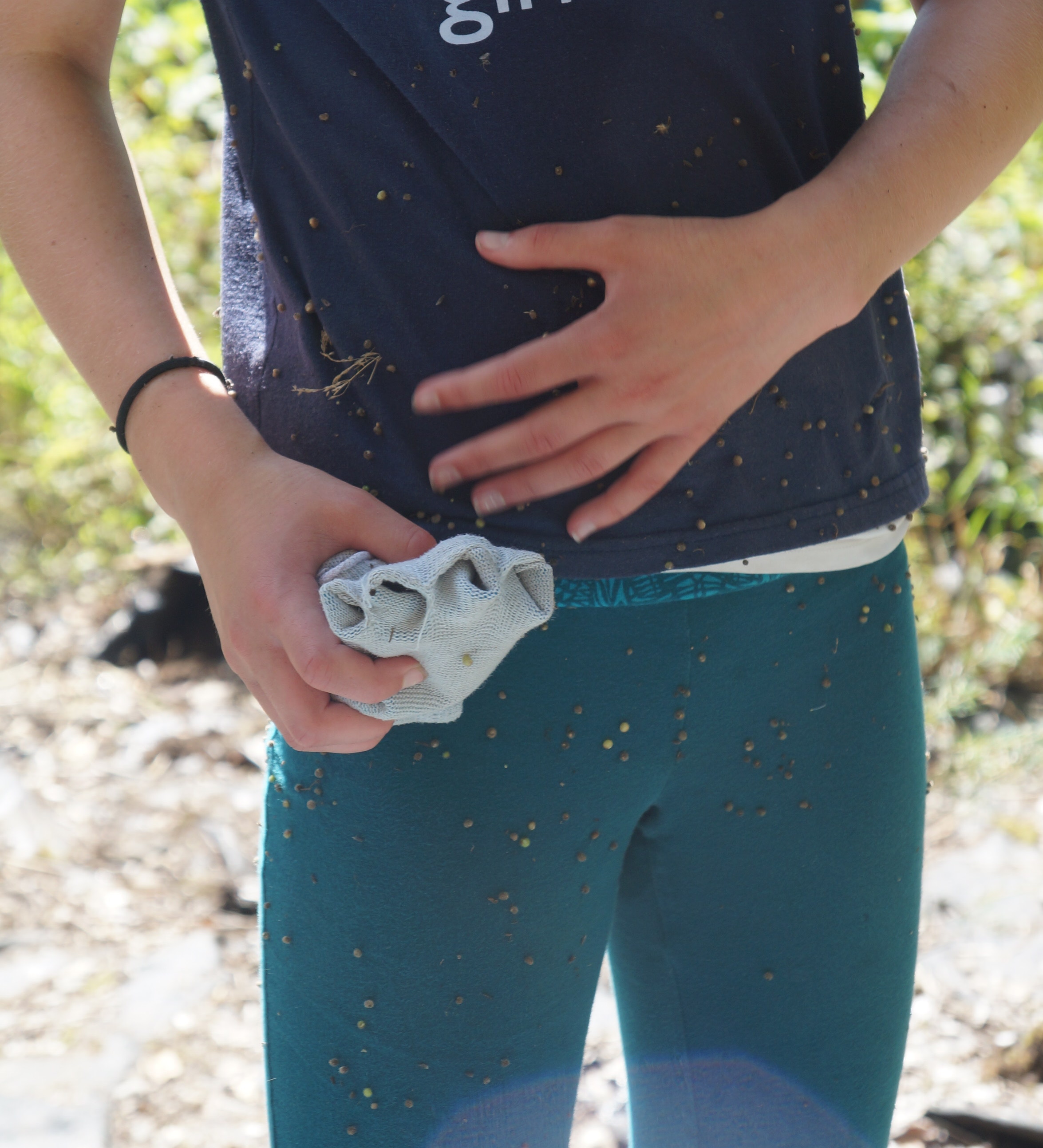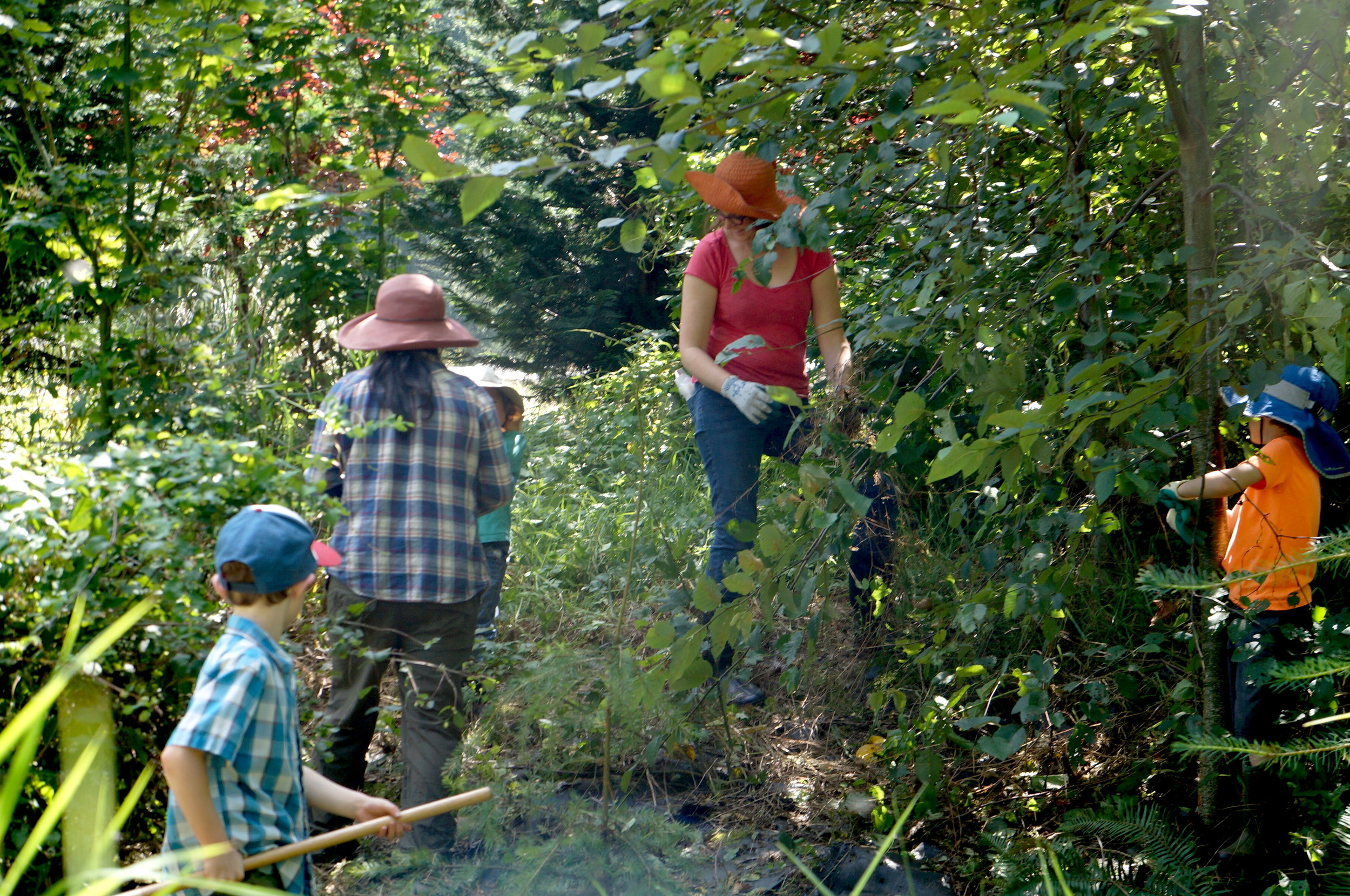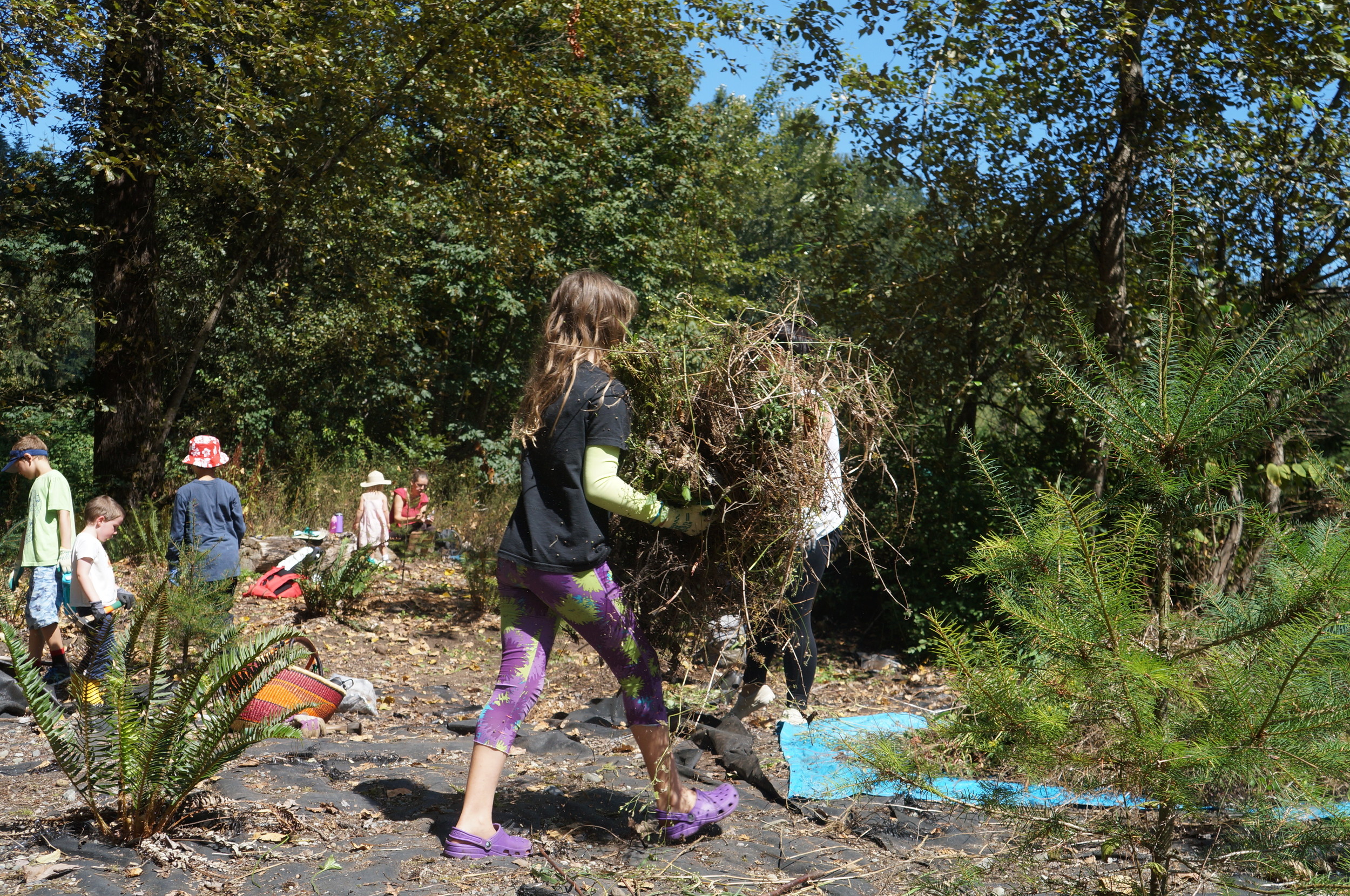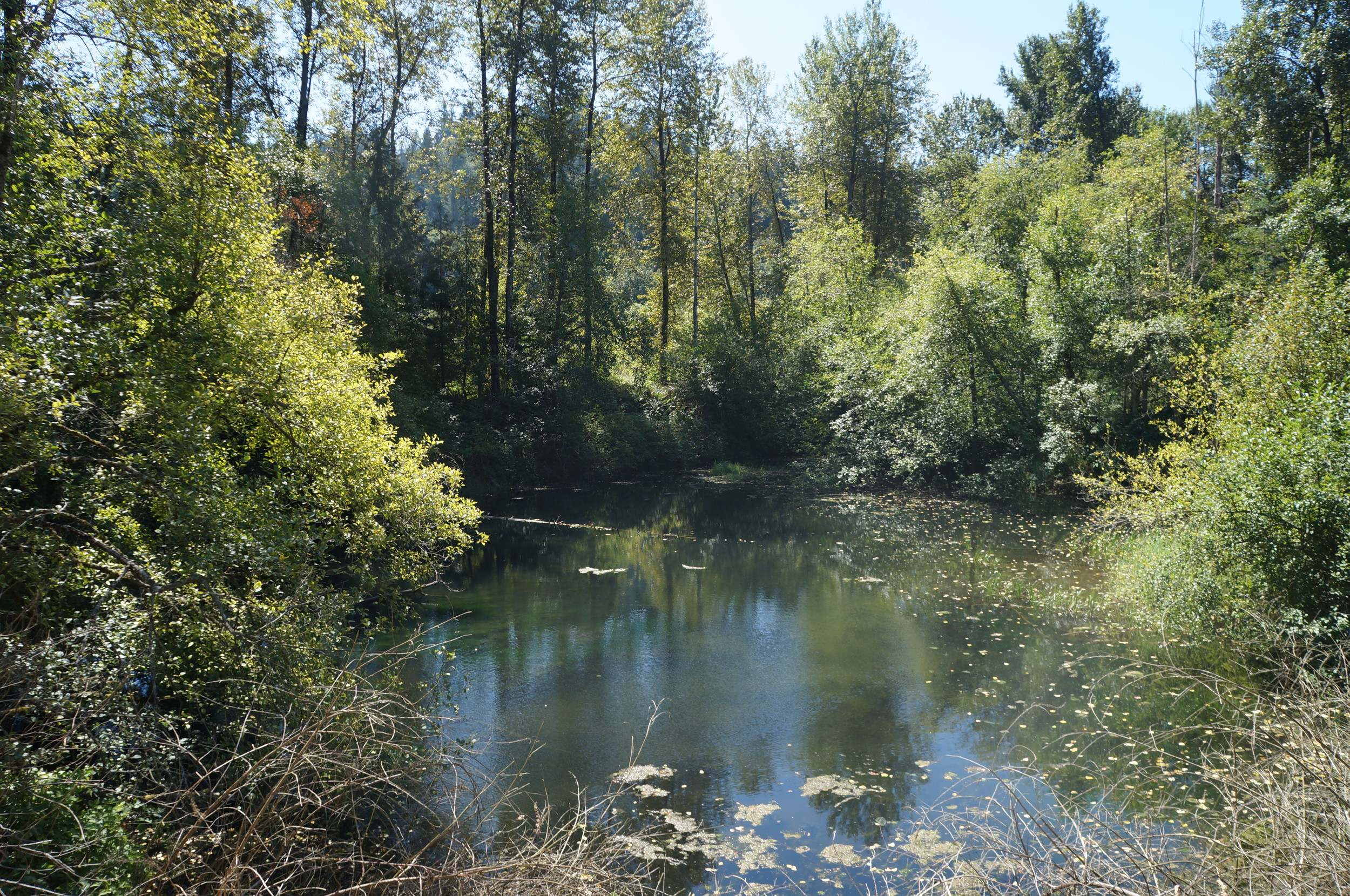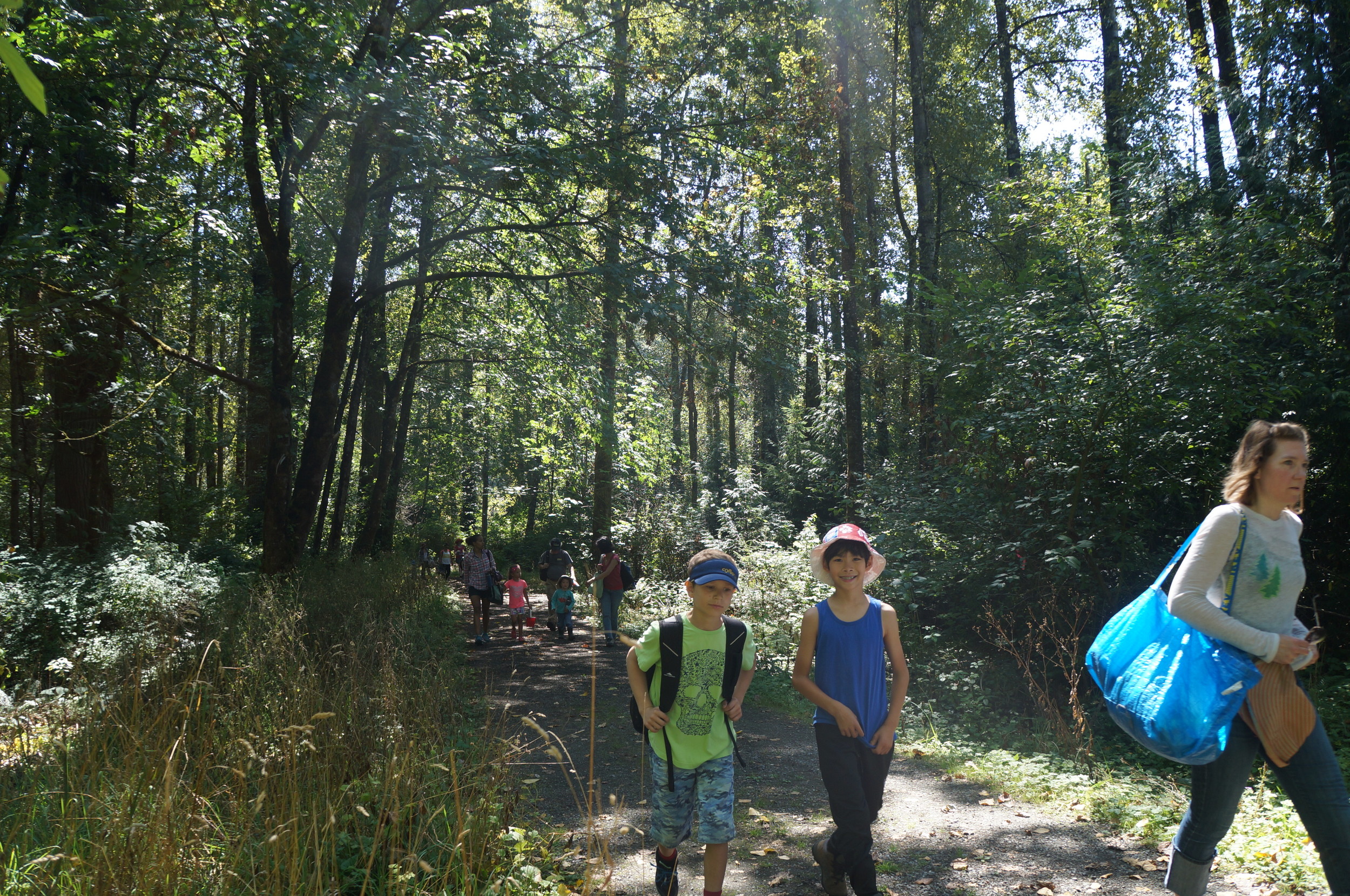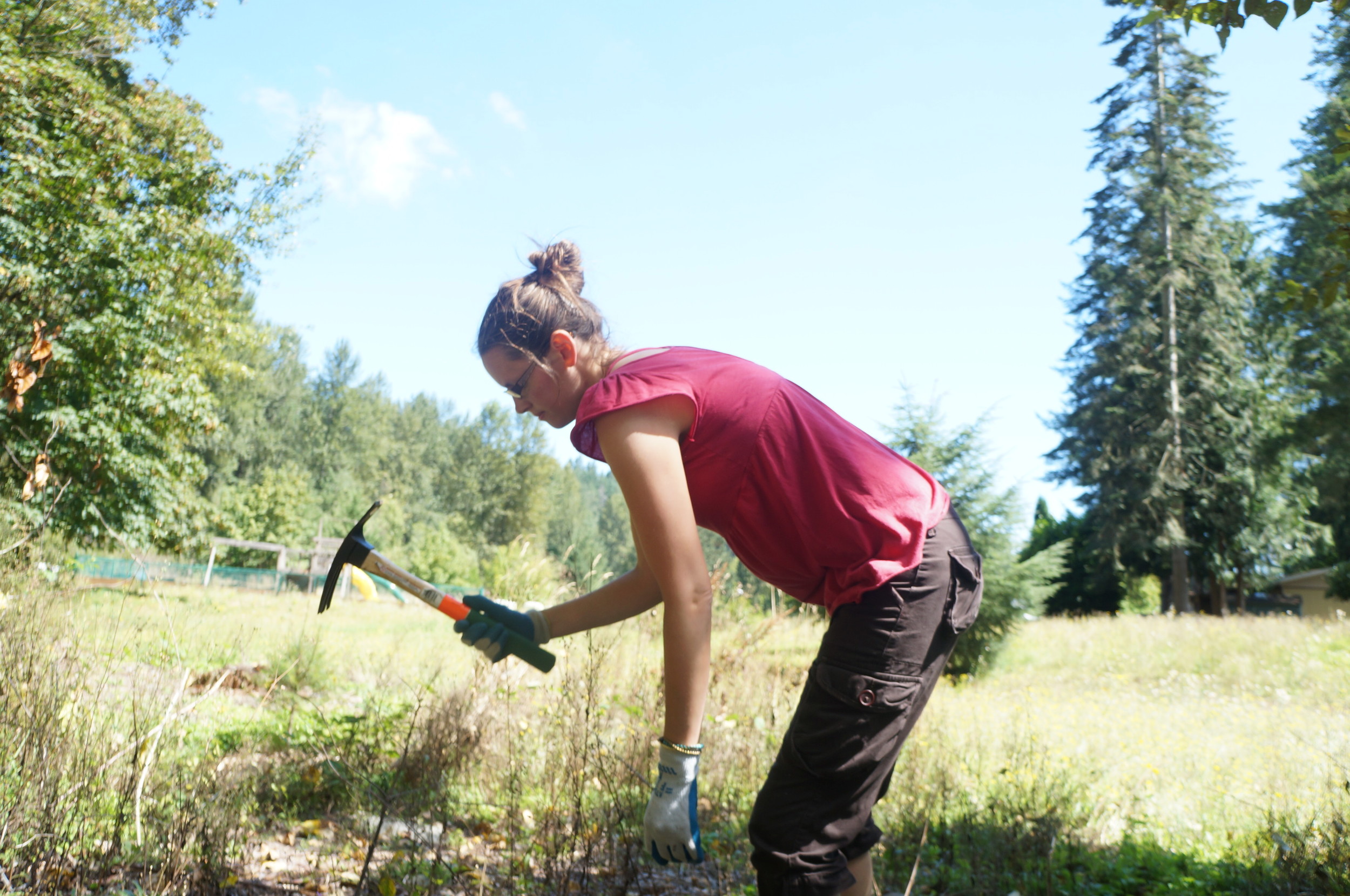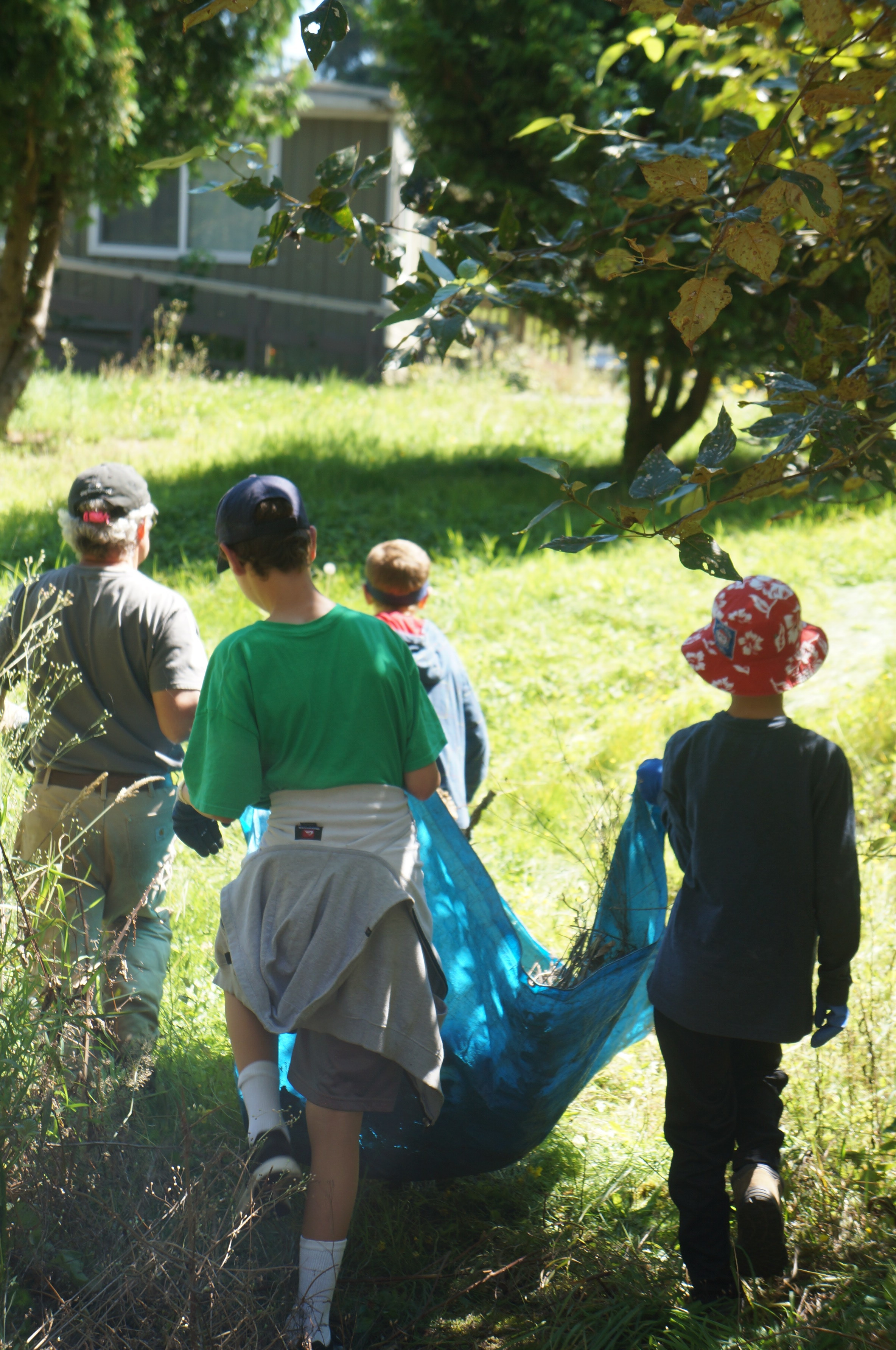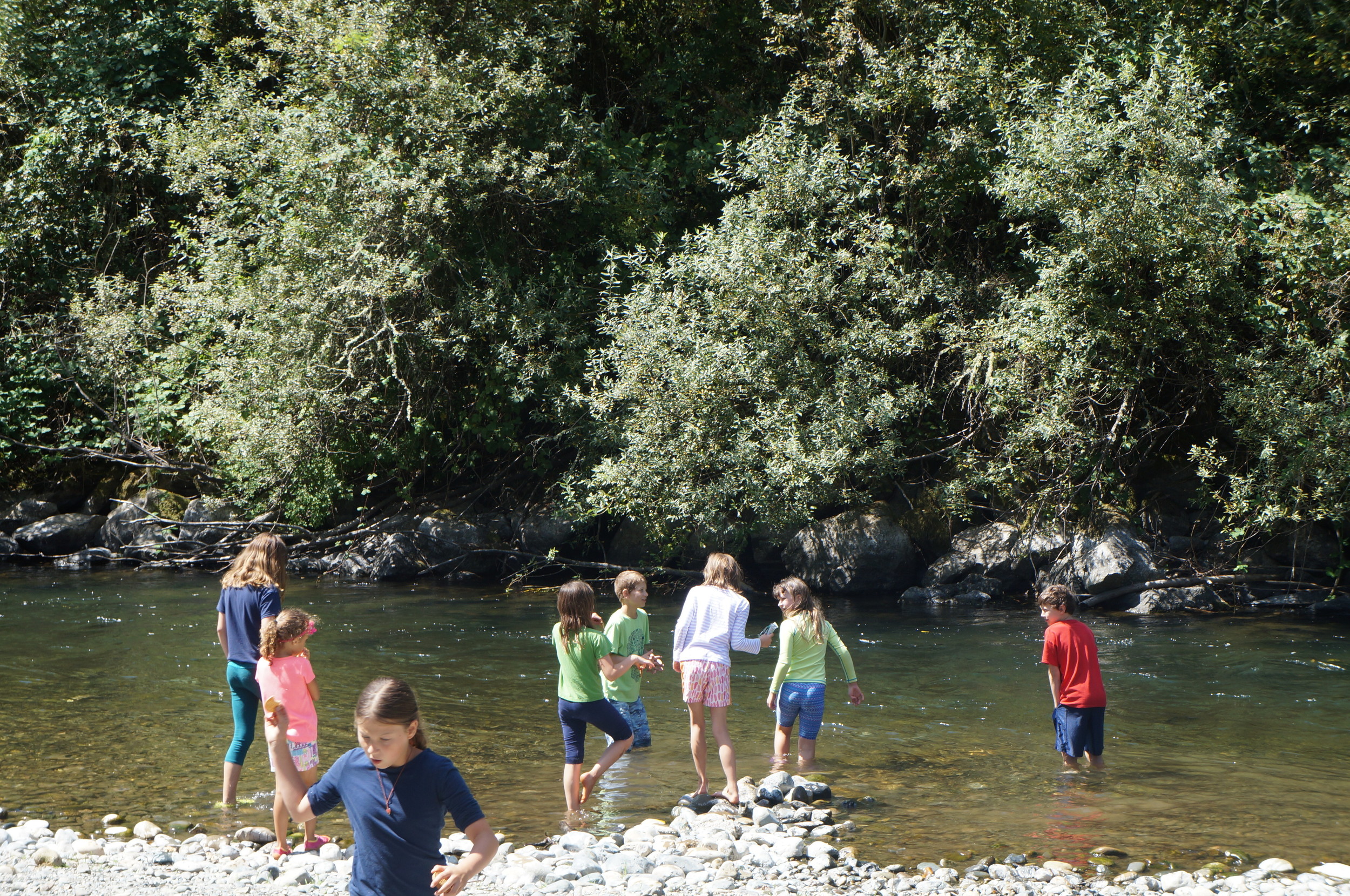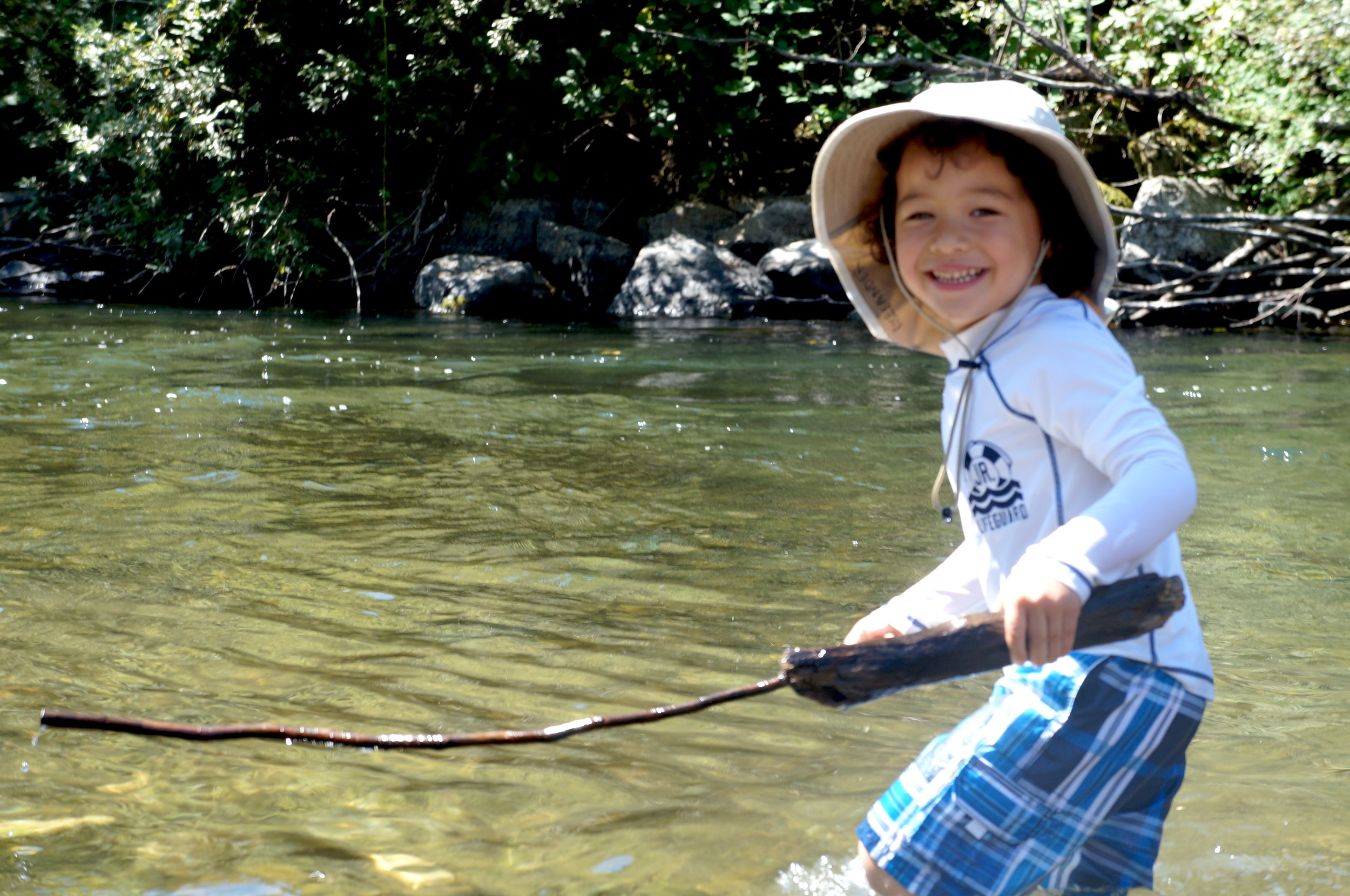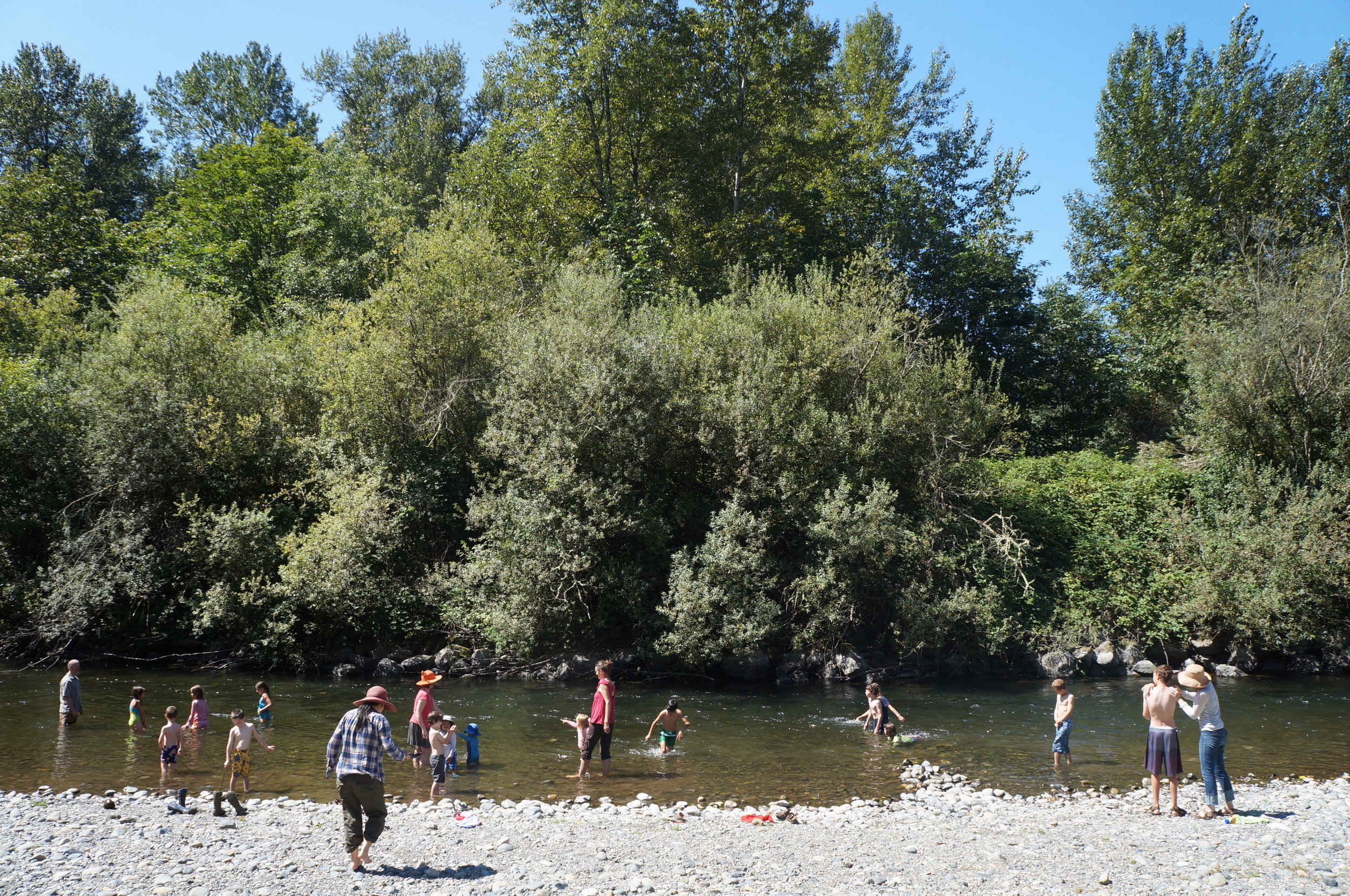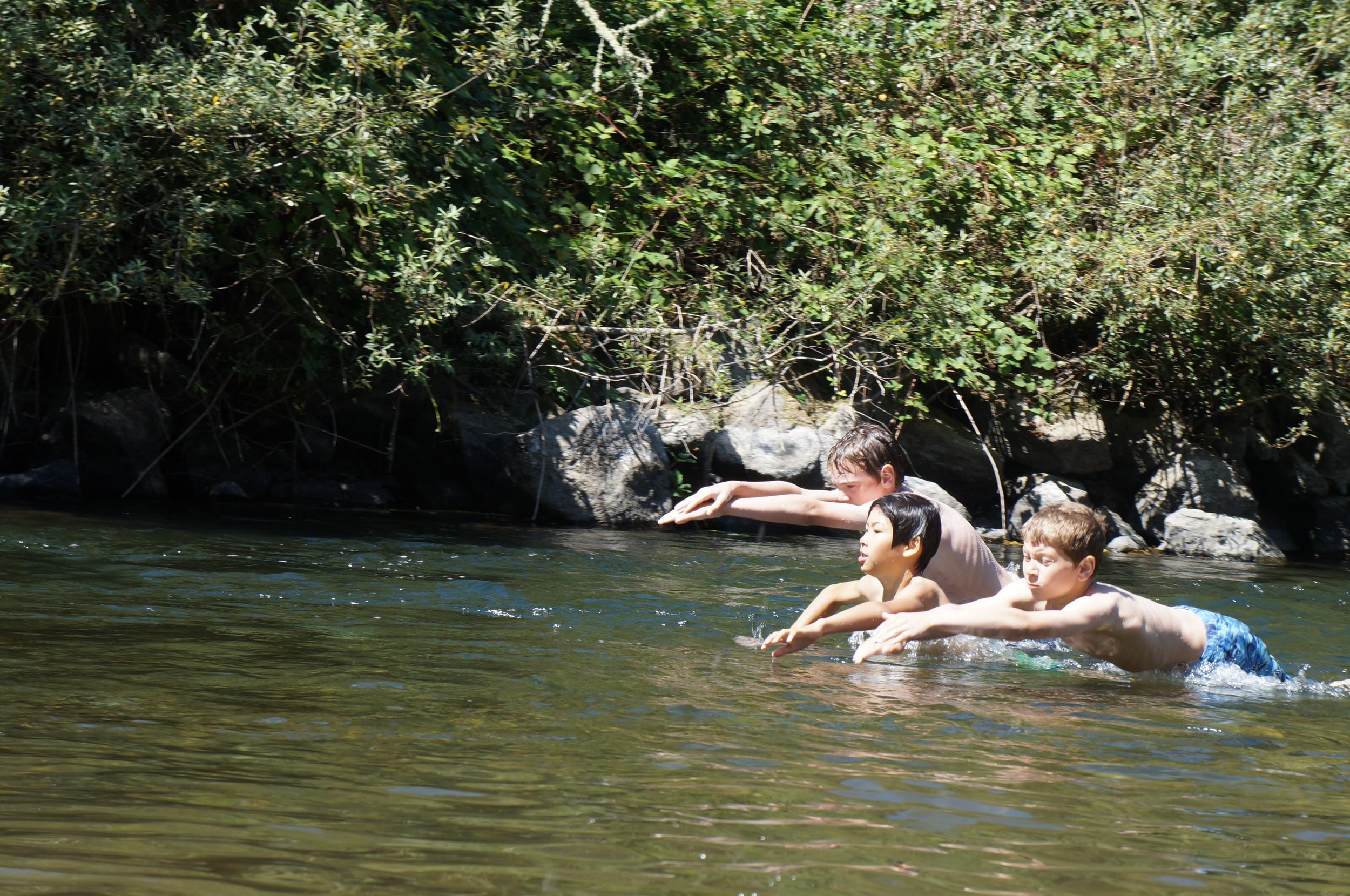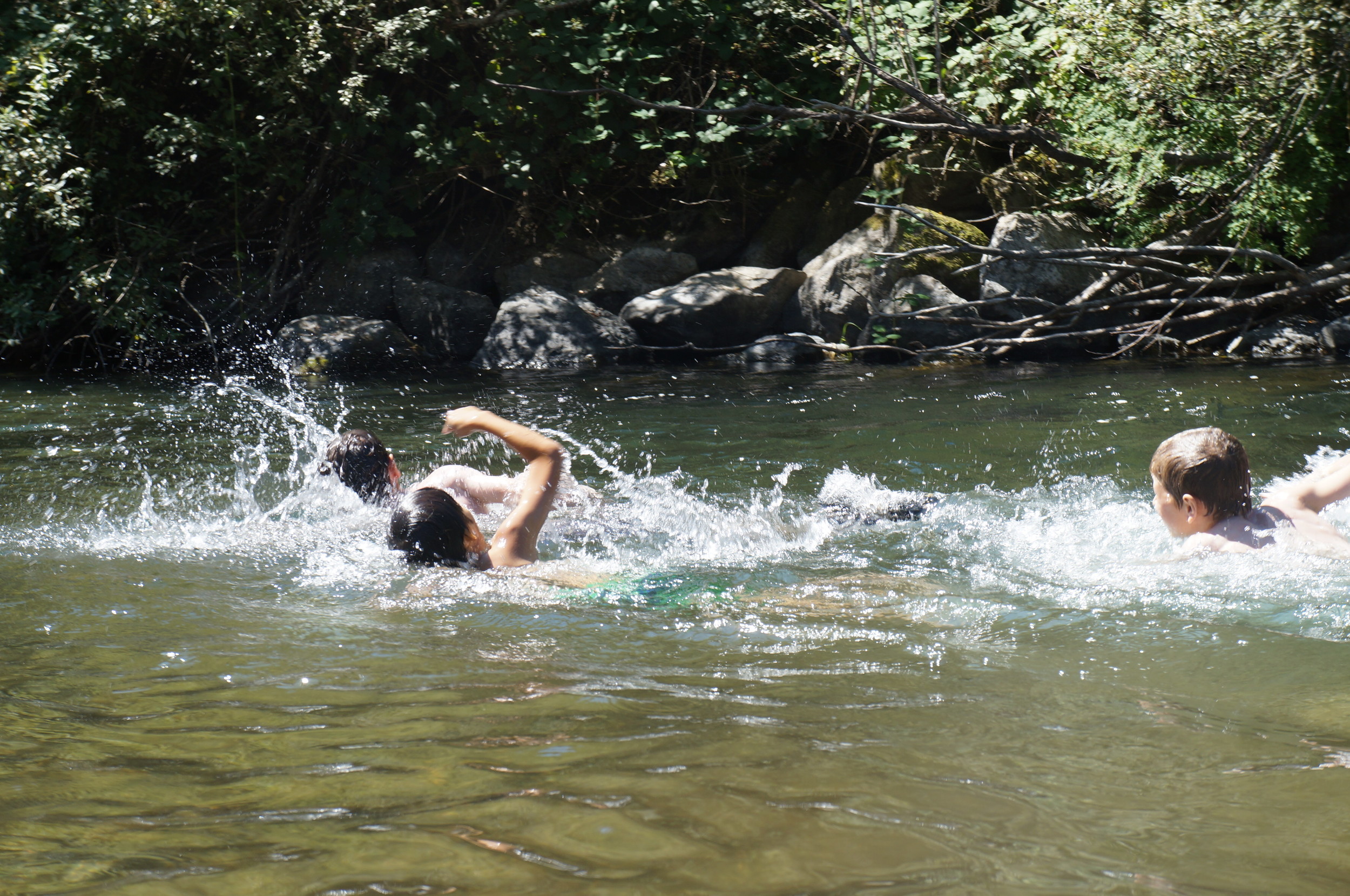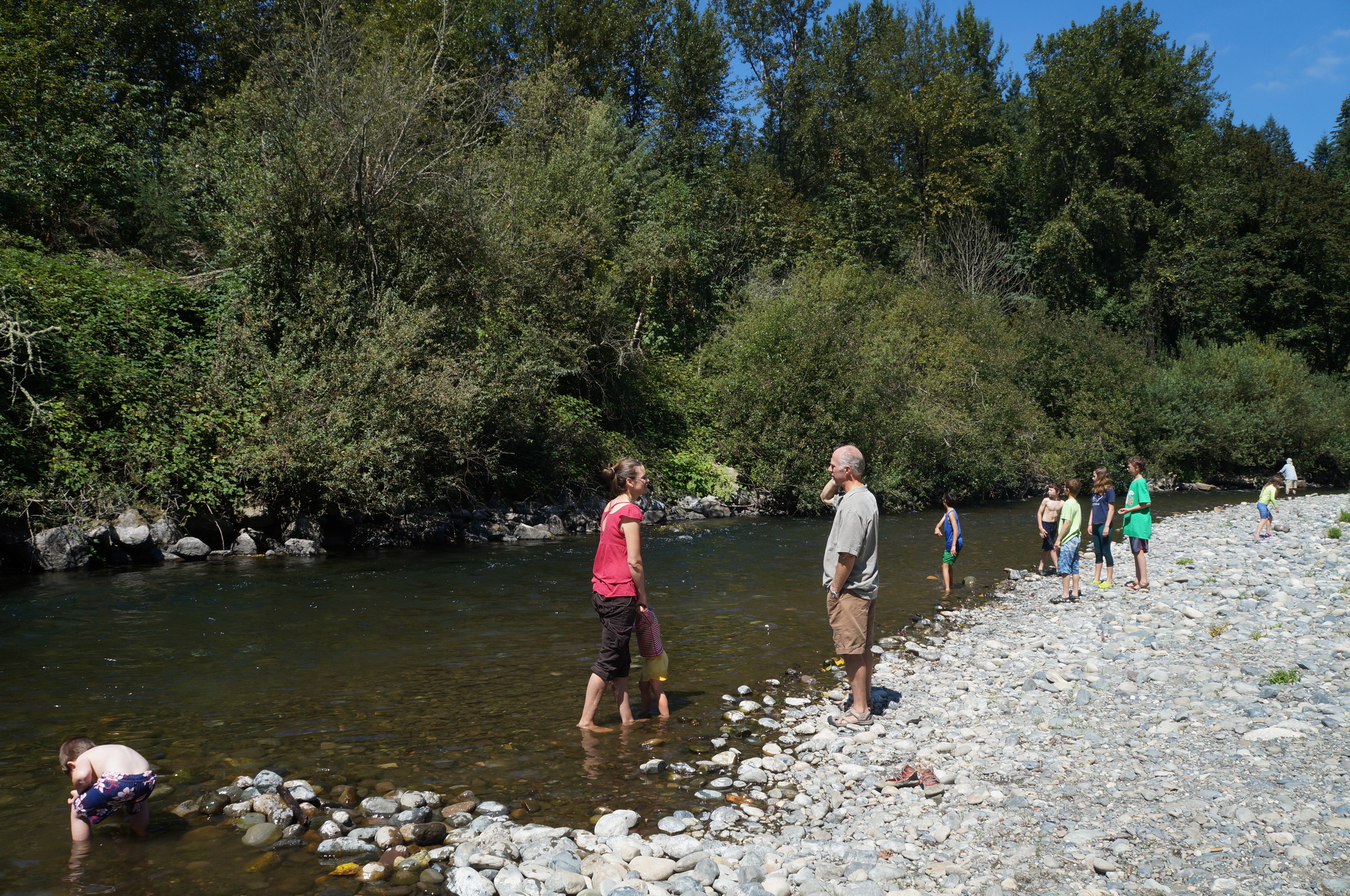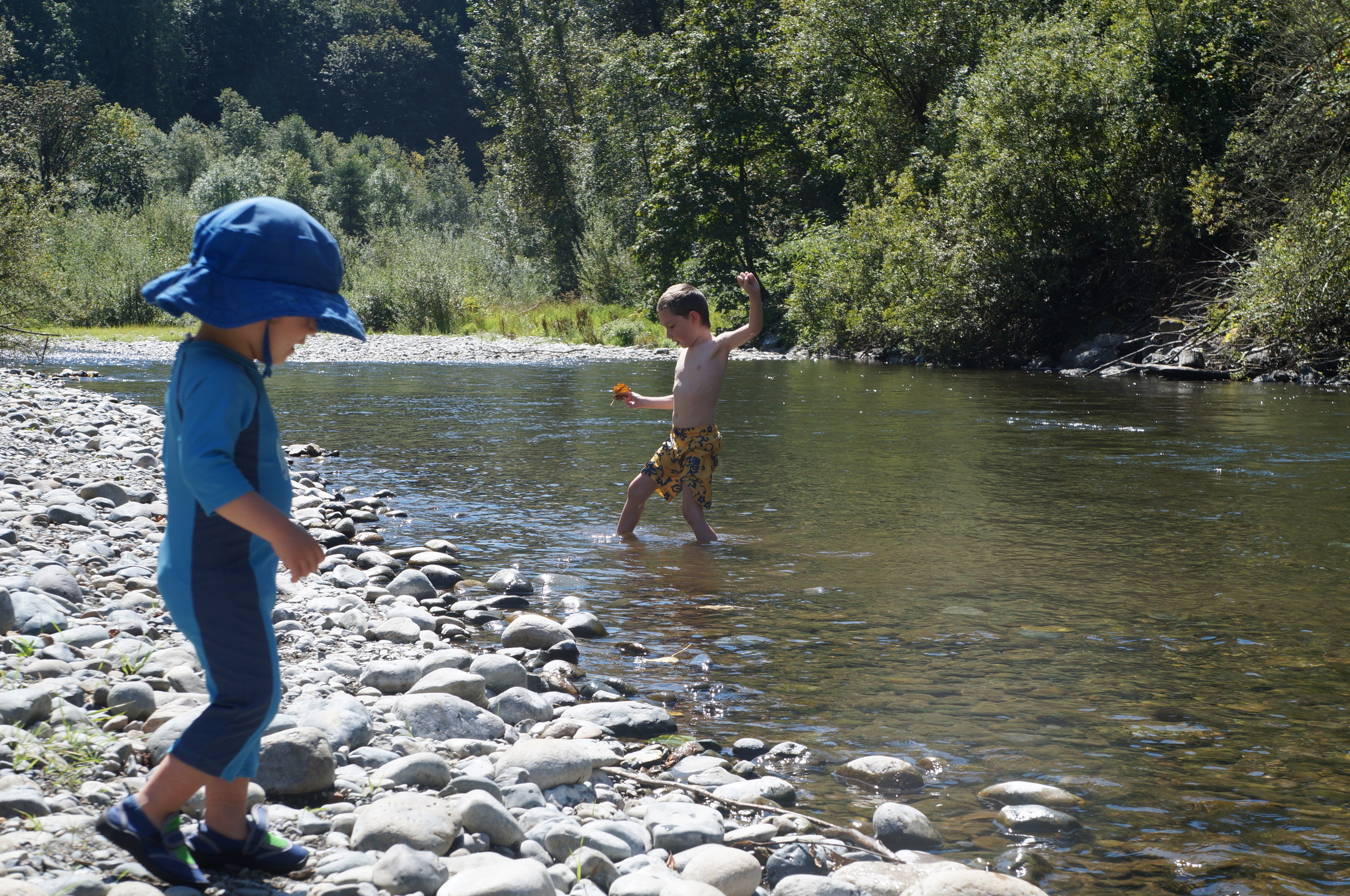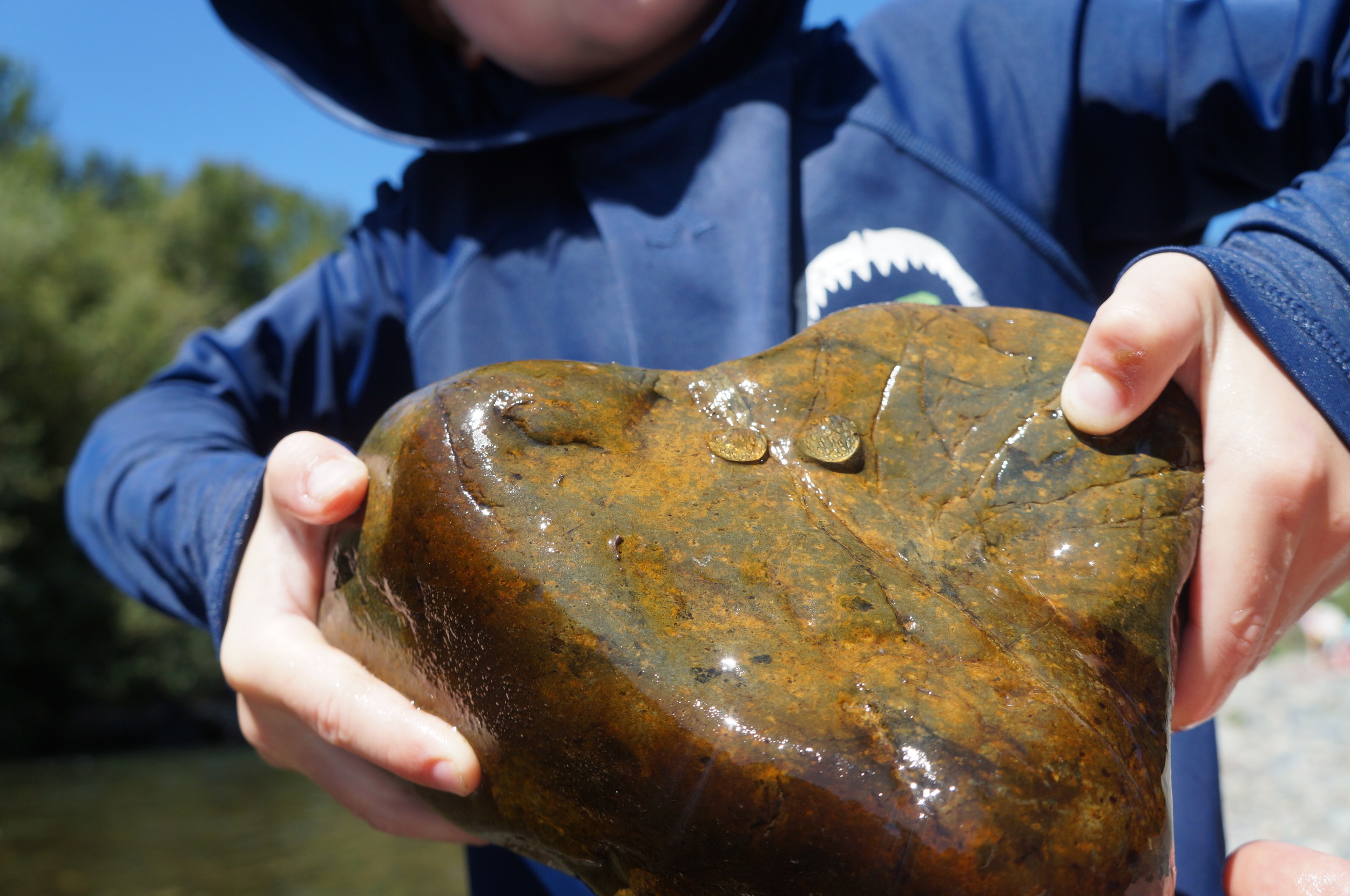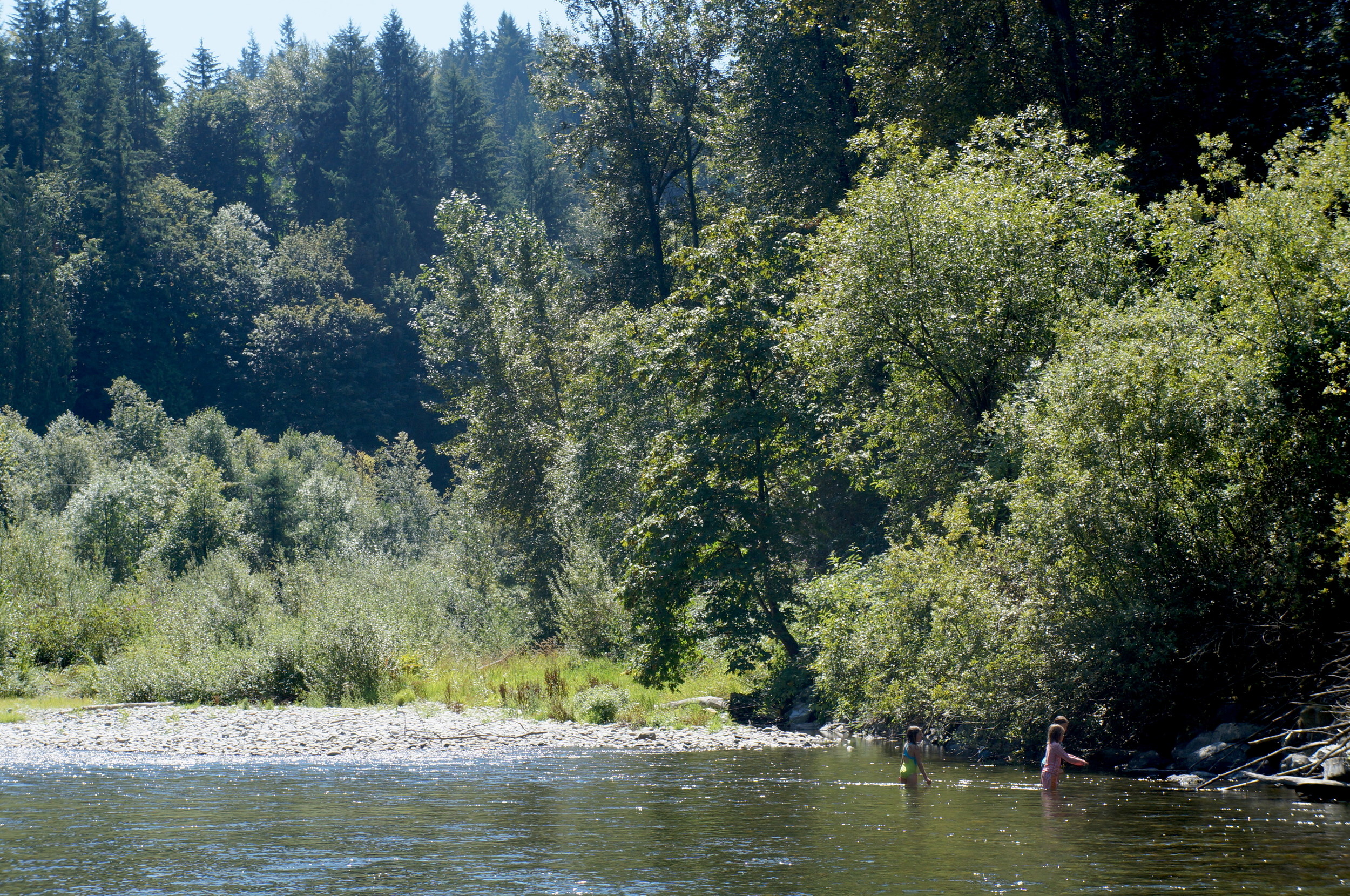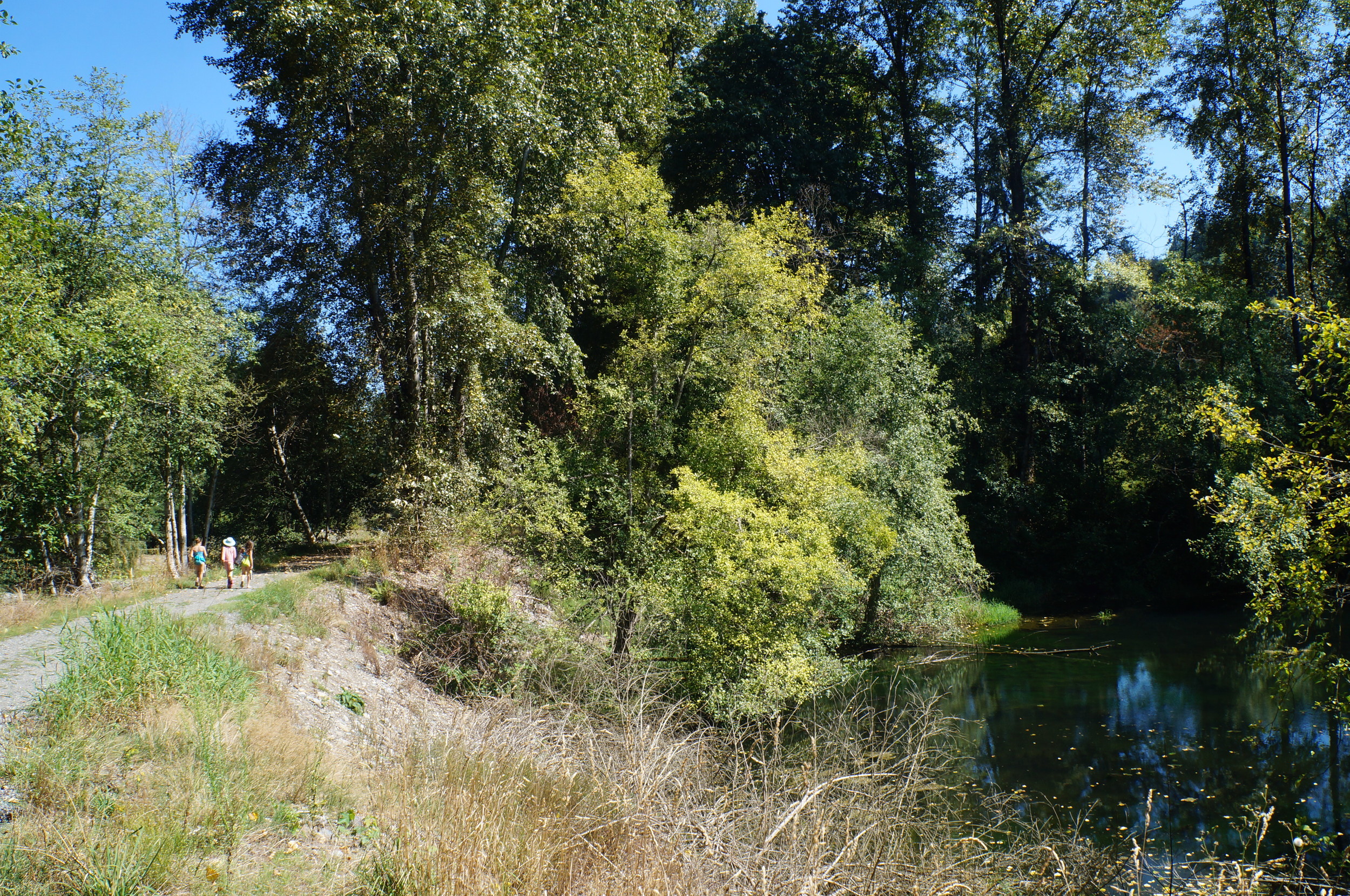Mayfly larvae, snails with their egg masses and caddisfly larvae on the underside of the river rocks are healthy indicators based on the Benthic Index of Biological Integrity.
We worked in the Cavanaugh Pond Natural Area with King County Parks on the Cedar River between Renton and Maple Valley. If you live south of the ship canal in the Seattle area, you're drinking water comes from the Cedar River and is impacted by its watershed.
The native planting survived the 2015 drought fairly well, thanks in part to our efforts to hand water last year. This year we performed some maintenance weeding near the mobile home park, which is gradually being converted by King County into a wider, more naturally meandering riverine zone. Eventually part of the levee will come out as well. These efforts will create important habitat benefits for salmon and other species, as well as ameliorate flooding downstream by allowing natural-area flooding and river broadening.
For lunch we walked past the ponds down to the rocky bend in the river. The undersides of the river rocks had a fascinating assortment of clinging species demonstrating good river health according to Benthic Index of Biological Integrity:
"Benthic macro-invertebrates, also known as stream bugs, are animals that can be seen with the naked eye, do not have backbones and live in the stream benthos—in or near the streambed. They include insects, crustaceans, worms, snails, clams, etc. Benthic macro-invertebrates are monitored because they are good indicators of the biological health of stream systems and play a crucial role in the stream ecosystem."
We look forward to keeping an eye on the undersides of rocks as well as continuing our efforts helping this former gravel mine site gradually return to health. Join us Thurs 10/13 when we return for stewardship and salmon viewing.

